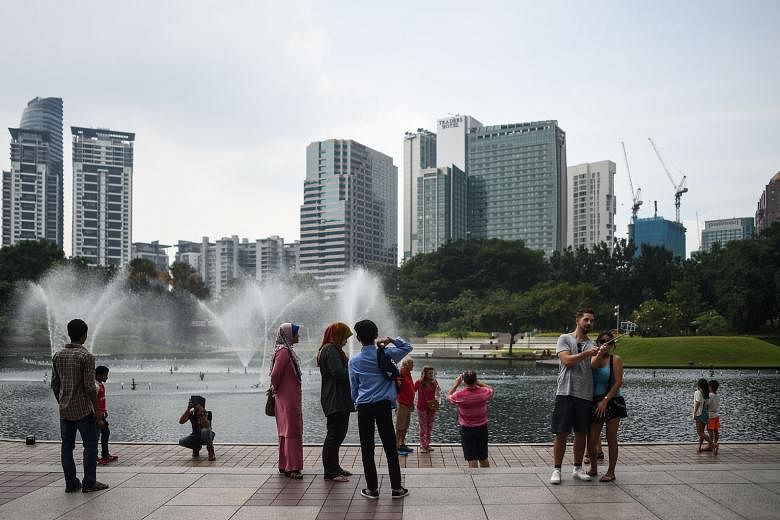KUALA LUMPUR • Malaysia's growth pace slid for the fifth straight quarter in April-June, and avoiding a further decline could depend on domestic demand staying resilient at a time when demand for the country's commodities remains weak.
The trade-dependent South-east Asian economy had annual growth of 4 per cent in the second quarter, the central bank said yesterday, the slowest pace in nearly seven years.
Malaysia's problems include the slowdown in top trade partner China and poor prices for its energy and other commodity exports.
Prime Minister Najib Razak faces graft allegations related to 1Malaysia Development Berhad. He has denied any wrongdoing.
Bank Negara Malaysia (BNM) governor Muhammad Ibrahim indicated confidence that the economic growth rate won't slide further. "To date, our economy remains resilient, driven by domestic demand and is on track to grow within the projected 4-4.5 per cent (for 2016) amid a challenging global environment," he told a press conference.
However, some economists are not so sanguine. ANZ said "any faltering in domestic demand could be the dynamic that triggers significant growth deterioration" and also possibly another 25-basis-point rate cut by the central bank.
Last month, BNM cut its benchmark rate for the first time in three years, to 3 per cent.
UOB economist Julia Goh agreed that one more rate cut this year is possible. "It looks like a slow second half," she said. "If there's anything that will help prop up the economy, it's going to be domestic demand and probably more stimulus measures, that we expect will be announced in the 2017 Budget."
Second-quarter growth was propped up by an annual 6.3 per cent expansion in domestic demand, up from 5.3 per cent in January-March. Private investment grew 5.6 per cent from a year earlier, against 2.2 per cent the previous quarter.
In the first half of this year, exports grew only 0.2 per cent from a year earlier, in ringgit terms.
The current-account surplus narrowed to RM1.9 billion (S$637 million) in the second quarter, from RM5 billion in the first quarter, due to a smaller trade surplus and higher net income payments, the central bank said.
Mr Weiwen Ng, an economist at ANZ, said the current-account balance and ringgit "will continue to be held hostage by oil prices".
The ringgit has strengthened about 7 per cent this year, but depreciated by 2.5 per cent in the second quarter and is again weaker than 4 to the US dollar. It was trading at 2.9892 against the Singdollar.
Mr Muhammad said that volatility is the new normal for currencies in the region, and he expects the ringgit to perform in the long run on strong economic fundamentals.
REUTERS

